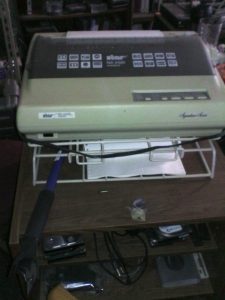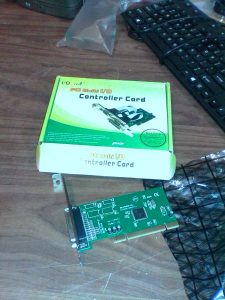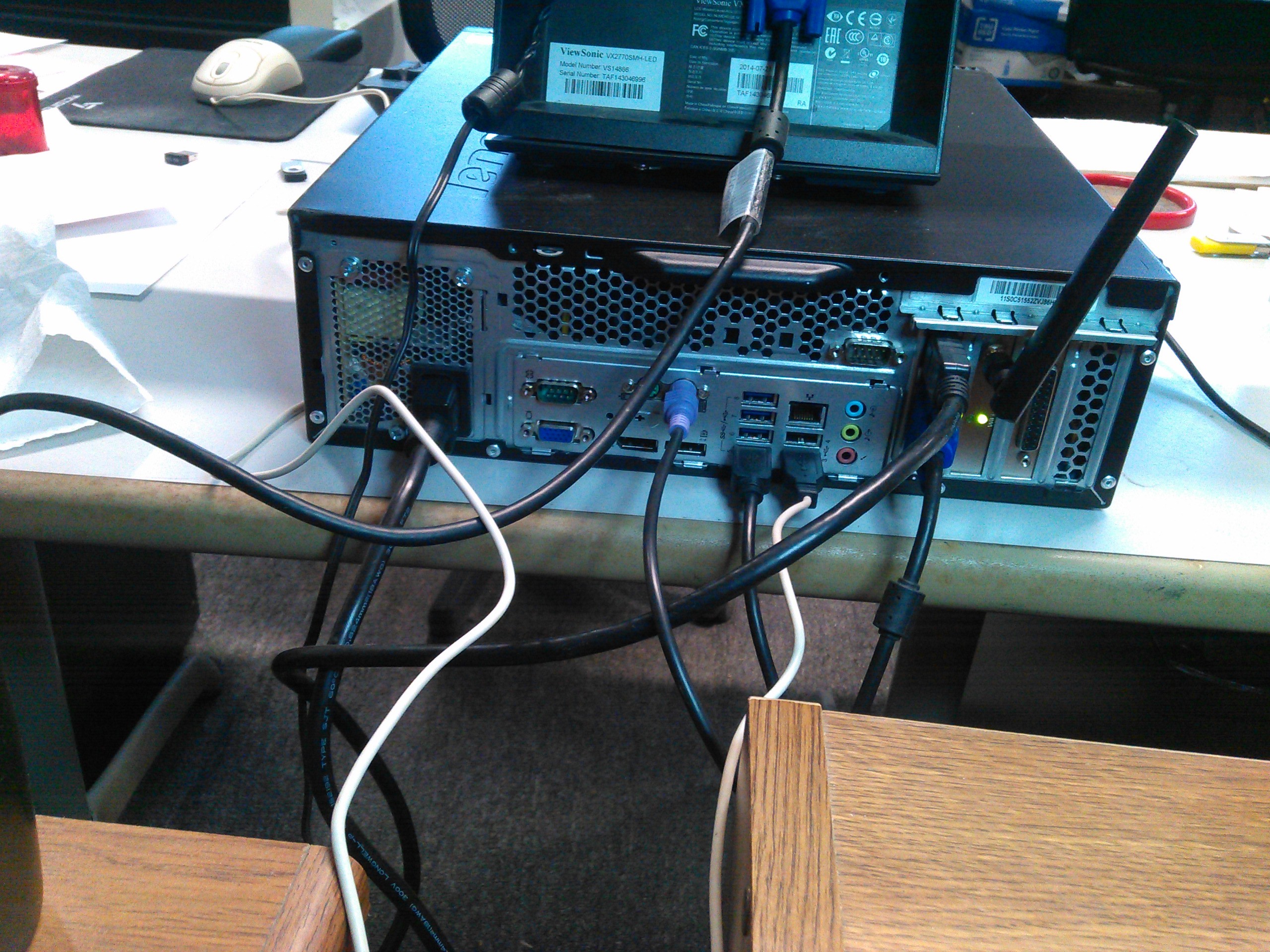Occasionally life gives you a chance to look back at your past and to allow others to resoundingly embarrass you for it. This weekend is such an occasion. Yes, I have a party for my nephew to attend and I will visit my dad at least once if not twice, but, the weather isn’t going to cooperate enough that I can help my brother continue planting season. In an ordinary year we would be long since done, but this is no ordinary year. For the states of Illinois and Missouri it is going to be an extremely short corn crop. Yes, the cold wet weather is bad around here, but, at least this isn’t my field.
Pity yourself all you want just don’t do it out loud. There is always some poor bastard worse off than you and you had best remember that each and every day, not just Memorial Day weekend.
In that vein I’ve been doing some poking and experimenting. Obligations on my time will only be a few hours per day and so I’m just killing time until my new contract starts next week some time.
xpnsqt
Yes, I have heard some of you want me to get back to my Raspberry Pi series and we will eventually. We were basically at the stage I rarely have to do, configure for cross compile. If I’m going to jump through that hoop I might as well do something others want me to do, configure cross compile for Andriod. This way all of the pain is gotten out of the way at once. We should also have 2 test applications. The SerialKeypad application from the Raspberry Pi series and xpnsqt which is now actually called xpnsqt2 on my computers after I had to tweak it for Qt 5 compilation some time back.
Xpnsqt is something I actually use each year while getting ready for taxes. I was looking to learn Qt and had written a few “Hello World!” type applications, but nothing really substantial. I got onto this “How Far We’ve Come” topic because I can’t quite determine when I first wrote it. Honestly, I compile this thing and restore my expense database each time I switch distros or upgrade to different Qt version. For me it “just works” and other than the Qt 5 header file changes, I no touchy.
DOS Days
Had a nice little version of this expense tracker written with Lotus Approach. Years prior to that I had some DOS based program I wrote in C/C++ using the Greenleaf Database (GDB) Library and Greenleaf DataWindows (GDW) Library. Sorry I could not find a link for GDB but I did find a link for Patrick who lists it at the bottom of this page currently. DataWindows still has some mentions on-line with some more detailed than others.
Most of you will never have heard of these products because you are not older than dirt. DataWindows came out well before Microsoft shipped Windows 1.0 and, if memory serves, before OS/2 even had a hint of a presentation manager. Then the Clintons interfered with Janet Reno’s criminal investigation of Microsoft and Microsoft got the trademark right to “Windows” in all things software while the human species got royally screwed. Every week or so the little bitty company called Greenleaf had the 8000lb gorilla’s lawyers dropping nastygrams of intent to blah blah blah until all their cash was consumed by other lawyers and, eventually, DataWindows got dropped. Definitely “Medal of Honor” stuff there.
The Star Printer
 All the expense tracker did was group each expense under a category in a simple database. I would manually enter each expense in the nice little screen then I could run one of two reports: all expenses or tax deductible expenses. Each created an ASCII text file set up to print to a continuous form printer complete with page breaks, category totals and a grand total. I would send the file to my printer, it would grind away and I would take it to my tax professional.
All the expense tracker did was group each expense under a category in a simple database. I would manually enter each expense in the nice little screen then I could run one of two reports: all expenses or tax deductible expenses. Each created an ASCII text file set up to print to a continuous form printer complete with page breaks, category totals and a grand total. I would send the file to my printer, it would grind away and I would take it to my tax professional.
Yes, I still have that Star NX-2420 printer. It still works as far as I know. I printed something with it a few months ago but the ink ribbon was getting dry and my box of continuous form paper is about as old as the printer. Somewhere in this office I still should have at least one if not two brand new sealed up ribbons for this printer.
I probably should have saved the 9-pin serial printer I sent to electronic recycling instead of this one during my last office purge. I’ve had this printer forever and it’s a tank, but I could print continuous form mailing labels on the other. It didn’t have a big rubber platen. Tractors on the serial printer could slide all the way together. The spool of continuous form labels used to friction feed via the rubber platen but it has gotten quite dry and the labels are a long way from fresh.
Preprinted Continuous Form Mailing Labels
 I’m guessing I told myself nobody sold preprinted continuous form mailing labels anymore. Yes, I knew it was a lie when I said it, but I forced myself to believe it. Sigh. I still have a few hundred more of these which require hand writing now. Used to have a little C/C++ program I wrote under DOS and ported to OS/2 which would let me either manually enter addresses or open a text file in another portion of the screen to cut and past addresses in. I could click on the print button and it would automatically put the address in the right spot for this label. Yes, I know, most of you don’t find that useful, but you also do not write and ship books. I’ve been doing that and using these labels for decades.
I’m guessing I told myself nobody sold preprinted continuous form mailing labels anymore. Yes, I knew it was a lie when I said it, but I forced myself to believe it. Sigh. I still have a few hundred more of these which require hand writing now. Used to have a little C/C++ program I wrote under DOS and ported to OS/2 which would let me either manually enter addresses or open a text file in another portion of the screen to cut and past addresses in. I could click on the print button and it would automatically put the address in the right spot for this label. Yes, I know, most of you don’t find that useful, but you also do not write and ship books. I’ve been doing that and using these labels for decades.
Where We Were
Why all of this talk about things most of you are too young to have ever seen? Because you have to understand where we were in order to both appreciate and beat upon where we are. In the world of business printing we have went downhill exponentially. That simple thing of being able to feed a raw ASCII file to a printer with formfeed characters in it and have it do the right thing has been repeatedly lost. We will stumble on that while discussing xpnsqt.
 Sadly I haven’t been able to find my USB->Parallel cable in a number of years and I never think about replacing it because I know it is in one of my boxes of cables or drawers of “spare stuff.” If I was really into going down this rabbit hole I could pull the bracket off the generic parallel port card you see and stuff it in my current desktop hoping against all hope Linux still had the drivers for it.
Sadly I haven’t been able to find my USB->Parallel cable in a number of years and I never think about replacing it because I know it is in one of my boxes of cables or drawers of “spare stuff.” If I was really into going down this rabbit hole I could pull the bracket off the generic parallel port card you see and stuff it in my current desktop hoping against all hope Linux still had the drivers for it.
Hopefully I won’t take too many memory lane diversions so the kids who are still wet behind the ears don’t lose interest. They are the ones who need to read things like this the most.
Related posts:
Where Did My QDebug Output Go?
QtCreator – No qmlScene installed
